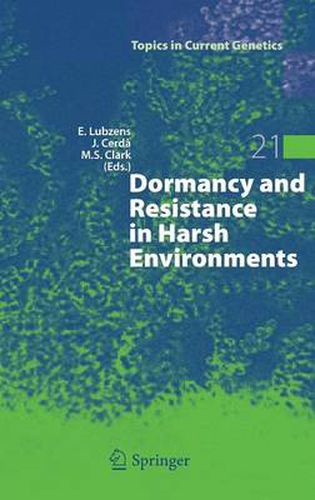Readings Newsletter
Become a Readings Member to make your shopping experience even easier.
Sign in or sign up for free!
You’re not far away from qualifying for FREE standard shipping within Australia
You’ve qualified for FREE standard shipping within Australia
The cart is loading…






This title is printed to order. This book may have been self-published. If so, we cannot guarantee the quality of the content. In the main most books will have gone through the editing process however some may not. We therefore suggest that you be aware of this before ordering this book. If in doubt check either the author or publisher’s details as we are unable to accept any returns unless they are faulty. Please contact us if you have any questions.
Many organisms have evolved the ability to enter into and revive from a dormant state. They can survive for long periods in this state (often even months to years), yet can become responsive again within minutes or hours. This is often, but not necessarily, associated with desiccation. Preserving one’s body and reviving it in future generations is a dream of mankind. To date, however, we have failed to learn how cells, tissues or entire organisms can be made dormant or be effectively revived at ambient temperatures. In this book studies on organisms, ranging from aquatic cyanobacteria that produce akinetes to hibernating mammals, are presented, and reveal common but also divergent physiological and molecular pathways for surviving in a dormant form or for tolerating harsh environments. Attempting to learn the functions associated with dormancy and how they are regulated is one of the great future challenges. Its relevance to the preservation of cells and tissues is one of the key concerns of this book.
$9.00 standard shipping within Australia
FREE standard shipping within Australia for orders over $100.00
Express & International shipping calculated at checkout
Stock availability can be subject to change without notice. We recommend calling the shop or contacting our online team to check availability of low stock items. Please see our Shopping Online page for more details.
This title is printed to order. This book may have been self-published. If so, we cannot guarantee the quality of the content. In the main most books will have gone through the editing process however some may not. We therefore suggest that you be aware of this before ordering this book. If in doubt check either the author or publisher’s details as we are unable to accept any returns unless they are faulty. Please contact us if you have any questions.
Many organisms have evolved the ability to enter into and revive from a dormant state. They can survive for long periods in this state (often even months to years), yet can become responsive again within minutes or hours. This is often, but not necessarily, associated with desiccation. Preserving one’s body and reviving it in future generations is a dream of mankind. To date, however, we have failed to learn how cells, tissues or entire organisms can be made dormant or be effectively revived at ambient temperatures. In this book studies on organisms, ranging from aquatic cyanobacteria that produce akinetes to hibernating mammals, are presented, and reveal common but also divergent physiological and molecular pathways for surviving in a dormant form or for tolerating harsh environments. Attempting to learn the functions associated with dormancy and how they are regulated is one of the great future challenges. Its relevance to the preservation of cells and tissues is one of the key concerns of this book.